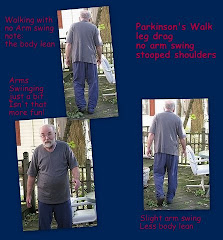Most of us have seen the rating scales for PD before. These are still a very significant part of the Parkinson's diagnosis and the progression tracking throughout the path of this disease. We list the Hohen and Yahr (HY) scale first because it is a way to evaluate motor impairment as well as physical disability. It also can be used to measure response to treatment.
The Unified Parkinson's Disease Rating Scale, known as the UPDRS is used to provide an assessment means for diagnosis and response to treatment. The UPDRS was revised under the sponsorship of The Movement Disorder Society. It is now known as the MDS-UPDRS. We have provided a table of areas for the MDS-UPDRS as well as links to the older and newer versions in html and PDF formats which list the measurements and the scoring. It was recently revised to be more user-friendly to patients, caregivers and diagnosticians. It appears to be getting some good reviews.
The Schwab and England Activities of Daily Living Scale should be read by family, caregivers and patients alike.
For the just curious, these scales should provide some instant recognition of Parkinson's Disease and the daily life of people with PD and their families.
Hohen and Yahr Scale
Stage one: Mild inconvenient symptoms on one side of the body
only. May present as tremor in one limb
Friends may notice changes in posture,
walking, facial expression
Stage two: Symptoms on both sides of the body.
Minimal impairment of balance.
Posture and gait affected
Stage three: Balance impairment. Mild to moderate disease.
Physically independent.
Generalized and moderately severe dysfunction
Stage four: Severe disability, but may still be able to walk or stand
Stiffness and bradykinesia, although tremor may lessen
No longer able to live independently .
Stage five: Wheelchair-bound or bedridden unless assisted
Loss of weight and muscle mass
Requires constant nursing care
only. May present as tremor in one limb
Friends may notice changes in posture,
walking, facial expression
Stage two: Symptoms on both sides of the body.
Minimal impairment of balance.
Posture and gait affected
Stage three: Balance impairment. Mild to moderate disease.
Physically independent.
Generalized and moderately severe dysfunction
Stage four: Severe disability, but may still be able to walk or stand
Stiffness and bradykinesia, although tremor may lessen
No longer able to live independently .
Stage five: Wheelchair-bound or bedridden unless assisted
Loss of weight and muscle mass
Requires constant nursing care
Movement Disorder Society MDS-UPDRS New version
Chairperson: Christopher G Goetz
Chairperson: Christopher G Goetz
MDS-UPDRS pdf format
UPDRS - Unified Parkinson's Disease Rating Scale
Old version pdf format
Old version pdf format
Schwab and England Activities of Daily Living Scale (ADL)
100% -Completely independent. Able to do all chores without slowness, difficulty or impairment.
90% - Completely independent. Able to do all chores with some slowness, difficulty or impairment.
May take twice as long to complete.
80% - Independent in most chores. Takes twice as long. Conscious of difficulty and slowing
70% - Not completely independent. More difficulty with chores. 3 to 4 times longer to complete chores for some.
May take large part of day for chores.
60% - Some dependency. Can do most chores, but very slowly and with much effort. Errors, some impossible
50% - More dependent. Help with 1/2 of chores. Difficulty with everything
40% - Very dependent. Can assist with all chores but few alone
30% - With effort, now and then does a few chores alone or begins alone. Much help needed
20% - Nothing alone. Can do some slight help with some chores. Severe invalid state
10% - Totally dependent, helpless
0% - Vegetative functions such as swallowing, bladder/bowel function are not functioning. Bedridden
In Part V it will be time to talk about the diagnosis and treatments for Parkinson's Disease and depression
In Part V it will be time to talk about the diagnosis and treatments for Parkinson's Disease and depression













